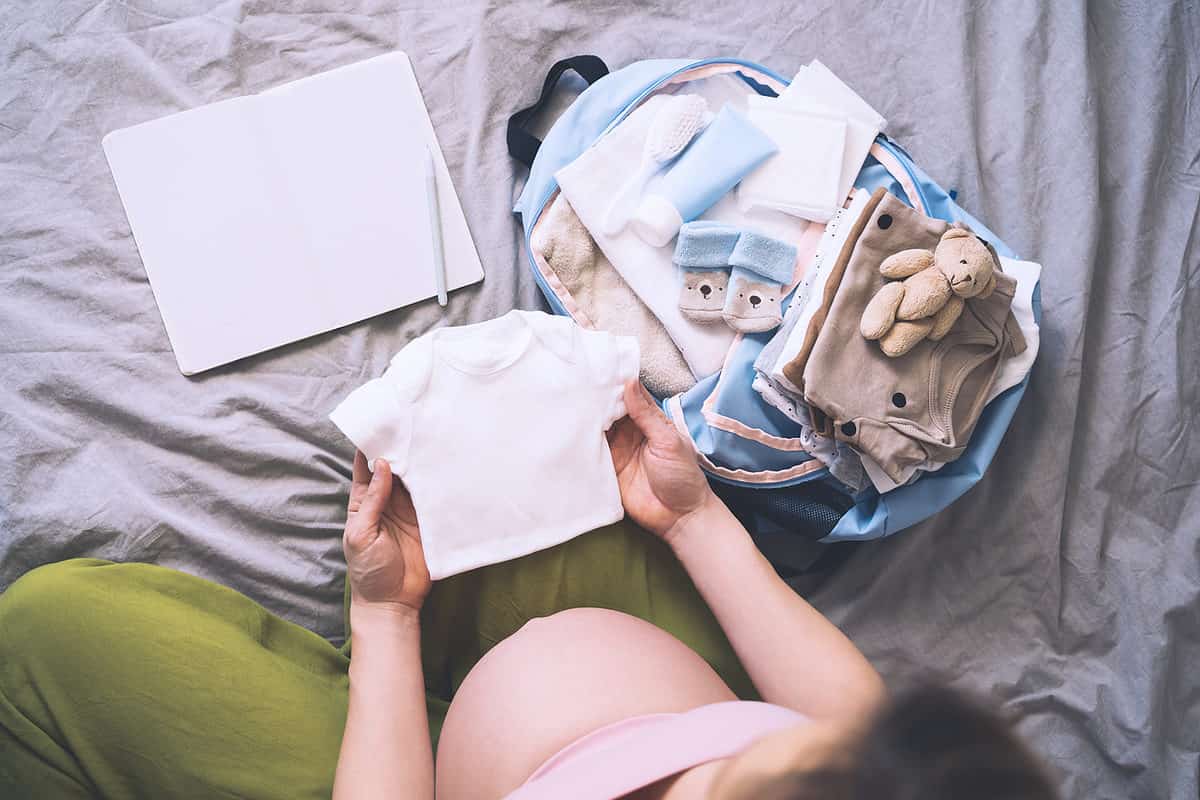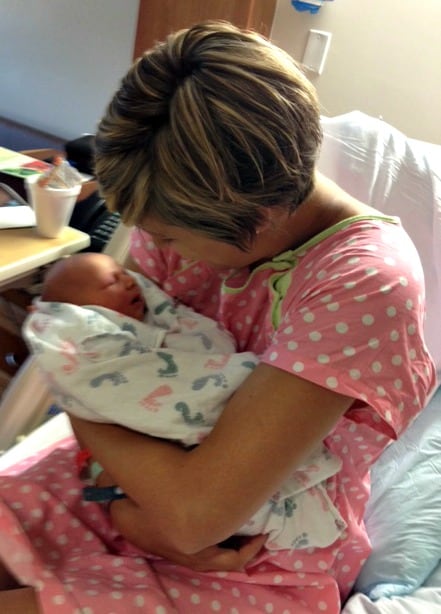The miracle of childbirth is truly a beautiful thing, but if you are pregnant and you suddenly go into labor when you aren’t in a hospital, then it can be a bit frightening. As many women have found out over the years, just because the doctor says that you may give birth on a certain day, it doesn’t mean that it is set in stone. If you are getting close to your due date, then you should be prepared and know how to deliver a baby safely in case you have contractions, your water breaks, or you realize you are about to go into labor.
Today, we will tell you about the 10 steps that you can take to be prepared and deliver a baby if you can’t get to the hospital on time.
Key Points of Going into Labor Before the Hospital
- Have a plan in place in the rare case your new child is making their appearance before you get to hospital.
- If you are forced to have your baby at home or outside of a hospital, try and contact your doctor for guidance and advice during labor.
- You will still need to go to the hospital for any additional tests for your new baby.
Signs That You May Be Going Into Labor
It is important to know the signs that you may be about to go into labor because if you experience them then you can know that it is time to call your significant other, a friend, or a neighbor to come and help you out. if you experience any of these, then it may also be time to have someone drive you to the hospital.
Signs may include:
A Show – This is when the mucus plug that is there to seal the opening of your cervix comes out of the vagina. It is typically a single blob of pinkish jelly. Seeing this is not a sign that you are immediately about to give birth. It may still be several days. However, it is a sign that you may want to go to the hospital.
Water Breaks – This is when the amniotic sac that surrounds your baby in the womb breaks and the fluid comes out. If this happens, assume that your baby will be born in the next 24 hours. This again does not mean that you are instantly going to give birth right then and there but if you have the option to go to the hospital this would generally be the best time to go.
Contractions – When your contractions start then it is a sign that the birth of your baby is imminent. If the contractions are spread apart by several minutes or even hours then you still have plenty of time to get to the hospital. If they are very close together, then you should contact your partner to help you out.
Keep in mind that these are not signs that you will give birth immediately, but you should get on your way to the hospital. At a minimum, call your doctor and tell them what is going on and follow their directions or do as they advise.
The Supplies You’ll Need to Deliver a Baby Safely

Pack an emergency birth kit in case you go into labor while you are out of the house.
©iStock.com/NataliaDeriabina
According to UT Southwestern Medical Center, about 9,000 women in the U.S. are unable to make it to a hospital on time and end up having a sudden birth at home or on the way to the doctor. Since over 3 million women give birth every year, the odds are pretty good that you will have a standard birth with the help of a doctor. However, it is not a bad idea to be prepared in case you unexpectedly go into labor.
The best way to do that is to gather the supplies you will need if your water breaks and you can’t make it to the hospital. Consider putting everything into a to-go kit that you keep in the car just in case. An emergency birth kit should include:
- Fitted sheets
- Bath towels
- Pillows
- Bulb syringe
- Receiving blanket
- Bottle of isopropyl rubbing alcohol (70%)
- Clothes for the baby (socks, onesie, slippers)
- Clothes for you (after you give birth)
- Shoelace or thread
- Diaper for the baby
- Washcloth
- Scissors
- Trash bag
- Flashlight (in case of night birth)
It is also important to talk to your husband, wife, friend, partner, or significant other about helping you out if you go into labor. You will need someone to assist in the birth. Discuss the steps below with them, so you are both prepared. If you are near your due date, then make sure that you have someone with you at all times in case of an emergency.
If you are able to, it would be generally wise to add sterile tools and cloth to your emergency kits. Such as sterile sheers, liquid bulb syringes, gauze, and thread. Most trauma first-aid kits will contain items like this and can generally be purchased online. However, you should ALWAYS consult with your doctor about exactly what you should get and how to keep everything clean and safe.
The Steps to Deliver a Baby Safely
Although we hope that you won’t have to go through this ordeal, there are steps that you can follow in the case of early birth. Follow the guidelines below, and you can deliver a baby safely and get the medical help that you require.
Step 1: Call 9-1-1
If you are at home when your water breaks and you can’t get to the hospital, then the first step should be to call 9-1-1 or an emergency doctor. This is also the case if you unexpectedly go into labor when you aren’t at home. Tell them what is happening, and they may be able to help you during the birth or immediately after. If you are on the road, then tell the dispatcher your location. Then, focus on safely delivering the baby.
Step 2: Get Comfortable
Get on the floor or flat space. If possible, sit on and around several pillows. Have your helper put blankets down where the baby will come out, so they don’t touch the dirty ground. The other reason for being on the ground is that the baby has a reduced chance of falling on the floor when they are born.
Mother should have at least one pillow under her hips. Until you know that the baby is definitely coming, lay on your side for comfort. When the contractions start, mom should be propped up on her back with additional pillows.
Step 3: Wash Your Hands
Once everything is prepared, the helper needs to wash their hands. When babies are born, they have almost no immune system to speak of, so you must be cautious. Wash your hands and wear gloves if possible. Once you wash your hands, do not touch anything but the baby or mom.
Step 4: Check for Crowning
As your contractions get stronger or closer together, then your partner should keep an eye on you and watch for signs of crowning. Once they see that, it is a sign that the birth is about to happen. Your partner may also see a membrane stretched across the head. That is the amniotic sac. To remove it, pinch the membrane and twist.
Step 5: Guide the Baby
Once that sack is breached, or the baby’s head starts coming, put your hand in front of the baby's head and let it naturally come out slowly. Don’t pull or try to force it.
During the process, your partner may need to put some gentle pressure on the base of the vagina to help the baby’s head pass.
As soon as the baby starts coming out, the mom should stop pushing. If your partner notices that the umbilical cord is wrapped around the baby’s neck, then simply guide the cord up and over their head. If you can’t, don’t panic. Once the baby comes out, you will be able to remove the cord.
Step 6: Hold On Tight
Once the baby’s shoulders start coming out, the process will speed up drastically. Never pull on the baby. It is at this time that the baby may slip all the way out. Be ready to hold on. The baby will be slick and wet, and they will probably wiggle.
Step 7: Help the Baby Breath and Keep Them Warm
Once the baby comes out, use your bulb syringe to clean the baby’s mouth and nose. Remove any fluid or pieces of membrane and ensure that the baby can breathe. If your baby does not immediately begin to cry, then they may have some more mucus. You can typically get rid of that by running your fingers alongside their nose to ease away that fluid.
The other most important thing to do is to keep the baby warm. Wrap your baby in the towels. Just don’t cover their face so they can breathe. Congratulations on your ability to deliver a baby safely.
Step 8: Deliver the Placenta
About 10 or 15 minutes after the baby is born, the placenta will come. Just like with the baby, do not pull on the placenta. Let it come naturally.
Step 9: Cut the Umbilical Cord
If the hospital is a few minutes away, then you can leave the placenta attached to the baby at this time. The doctors can take care of that when you get there. If the hospital is further away, then you may want to take care of it yourself.
To do so, take two shoelaces. Tie one lace around the umbilical cord five inches away from the baby’s belly. Tie the other shoelace further from the baby, about three inches from the first. Then, cut the cord with a knife or scissors between the two laces. By doing this, the mother can still do skin-to-skin without worrying that the remainder of the cord will tear away from the belly button.
Step 10: Get to the Hospital
If you have called 9-1-1, then hopefully, they have arrived by this time. If they haven’t, then you need to go to the hospital. The doctors there will need to complete additional tests to ensure that your baby is safe and healthy.
Other Preparations for an Unexpected Birth

If you hope to deliver a baby safely, then you should follow the steps above. However, there are other considerations that you should make as well.
Baby Watch – When your due date is quickly approaching, ask a friend or neighbor if they can be on baby watch. Basically, can they be around in case you go into labor and you need help or a ride to the hospital?
Childbirth Preparation Classes – Every expectant mother should take childbirth preparation classes. Even if you give birth in a hospital, you will want to know what will happen ahead of time. These classes could be a lifesaver in the event of a home birth.
Don’t Delay – If you feel that you are starting to have mild contractions that are spread apart, make your way to the hospital. Don’t try to delay or you may find that you have a home birth that you didn’t need to have.
Conclusion
So there you have it, the steps necessary to deliver a baby safely. Just remember to follow the steps above, contact your doctor or 9-1-1 immediately, and try not to panic. In most cases, the birth will go off without a hitch if you just remain calm. Congratulations on your new bundle of joy!
The image featured at the top of this post is ©Lopolo/Shutterstock.com
